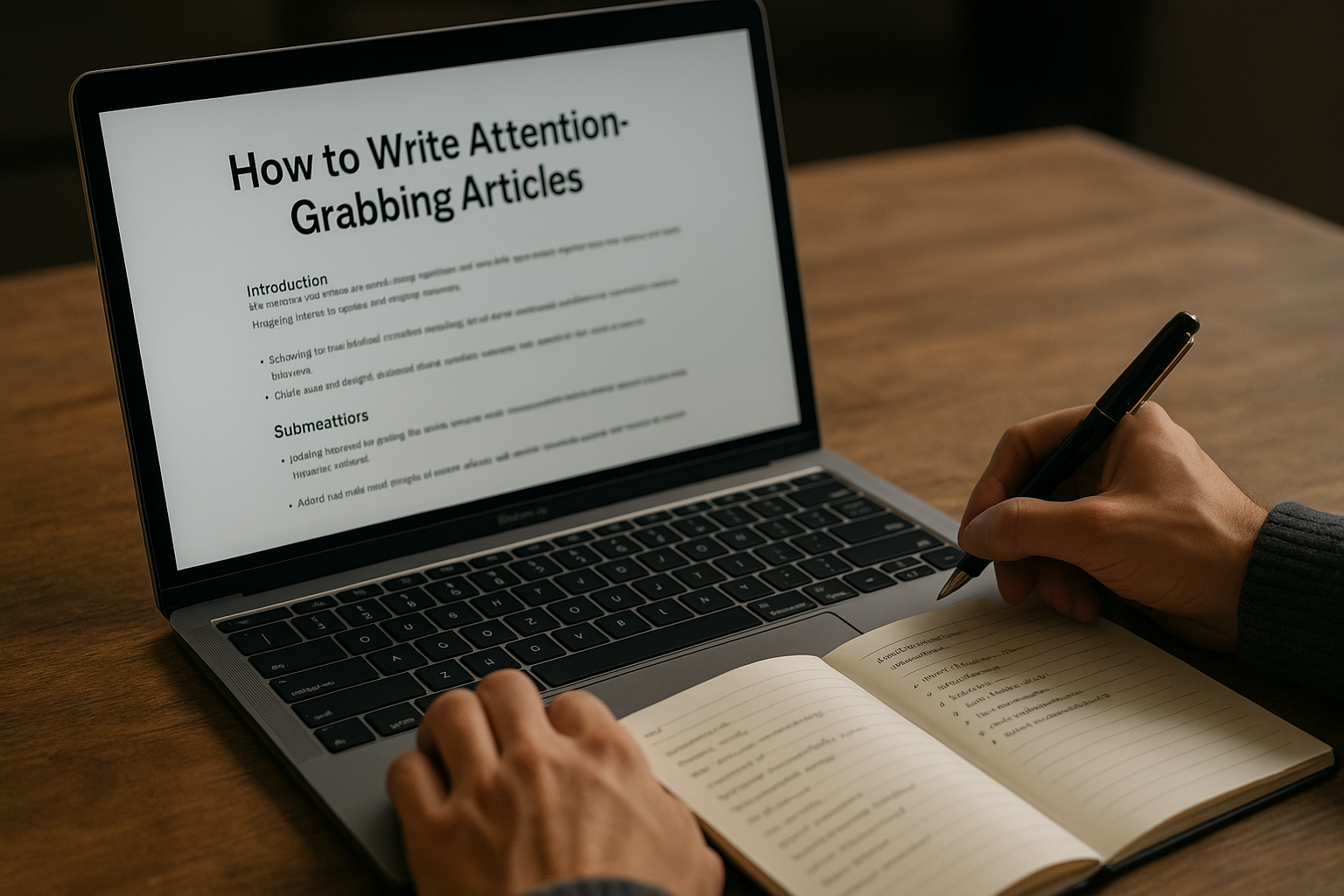Great writing isn’t just about correct grammar or clear structure — it’s about grabbing the reader’s attention and holding it from the first word to the last. In the digital age, where attention spans are shorter than ever, this skill is essential for any successful freelance writer.
If you want your content to stand out and keep your audience engaged, this guide will show you practical techniques to make your articles irresistible.
Why Capturing Attention Matters
When someone lands on your article, you have just a few seconds to convince them to keep reading. If your introduction is dull or your layout is hard to follow, they’ll bounce — no matter how good your information is.
Engaging articles help:
- Build trust and authority
- Increase time-on-page (great for SEO)
- Improve sharing and conversion rates
- Strengthen your freelance writing reputation
Step 1: Start with a Powerful Headline
Your headline is your first — and sometimes only — chance to hook a reader.
Effective headline strategies:
- Ask a question: “Are You Making These Writing Mistakes?”
- Offer a benefit: “How to Triple Your Productivity in Just 7 Days”
- Use numbers: “10 Habits of Highly Successful Writers”
- Create curiosity: “What Most Freelance Writers Get Wrong About SEO”
Use free tools like CoSchedule’s Headline Analyzer to test variations.
Step 2: Nail the Introduction
If the headline gets their attention, the intro has to seal the deal.
A strong introduction should:
- Speak directly to the reader’s problem
- Be short, punchy, and relatable
- Give a sneak peek of the article’s value
Example:
You’ve worked hard on your article, but no one seems to finish reading it. Sound familiar? The problem might not be your topic — it might be your delivery. Here’s how to fix that.
Step 3: Use Subheadings to Guide the Reader
Large blocks of text are overwhelming. Subheadings break your article into bite-sized pieces and help readers navigate the content.
Tips:
- Use H2 and H3 tags for structure
- Make subheadings benefit-driven (“Why Subheadings Matter” vs. “Subheadings”)
- Keep them consistent in tone and formatting
Step 4: Write Like You Talk
Formal writing can feel stiff and impersonal. Unless you’re writing for a technical or academic audience, use a conversational tone to build rapport.
How to do it:
- Use contractions (“you’re” instead of “you are”)
- Ask rhetorical questions
- Address the reader as “you”
Example:
Let’s be honest — no one wants to read a wall of text. So why write one?
Step 5: Use Short Paragraphs and Sentences
Dense text drives readers away. Keep things light and readable.
Best practices:
- Aim for 2–4 lines per paragraph
- Vary sentence length for rhythm
- Use bullet points or numbered lists where possible
Bad:
Writing is important. You need to write well to get readers. It is hard sometimes.
Better:
Writing matters.
Great writing holds attention.
And yes — it’s hard sometimes.
Step 6: Include Visual Breaks
Adding visuals helps break up text and keeps the reader engaged. This includes:
- Images
- Quotes
- Infographics
- Icons
- Screenshots
Even if you can’t add visuals yourself, suggest them to clients or format the text to allow for easy insertion.
Step 7: Use Transitions That Flow
Every paragraph should lead naturally into the next. Use transitional phrases to guide the reader smoothly.
Examples:
- “But that’s not all…”
- “Here’s the catch…”
- “Now let’s take it a step further…”
These create momentum and keep readers scrolling.
Step 8: Add Real-Life Examples or Stories
Stories and examples help illustrate your points and make abstract ideas more tangible.
Example:
Instead of saying, “Headlines matter,” explain how a specific headline led to a blog post going viral.
If you don’t have your own stories yet, reference studies, articles, or well-known cases.
Step 9: End with a Strong Conclusion and CTA
The ending is your final opportunity to leave a lasting impression.
Wrap it up with:
- A summary of key points
- A motivational closing sentence
- A clear call-to-action (CTA)
Example CTA:
Ready to make your next article unskippable? Start by rewriting your last intro with these tips — and watch your engagement soar.
Bonus Tip: Read It Aloud Before Publishing
Reading aloud helps you catch:
- Awkward phrasing
- Repetitive words
- Sentences that are too long
It’s one of the easiest and most effective editing tricks.
Final Thoughts: Keep the Reader at the Center
Great writing is ultimately about empathy. If you can understand what your reader wants — and deliver it in a way that feels clear, natural, and human — you’ll win their attention and their trust.
Every word should earn its place. Every sentence should invite the next. That’s how you keep readers hooked — from the headline to the very last line.
